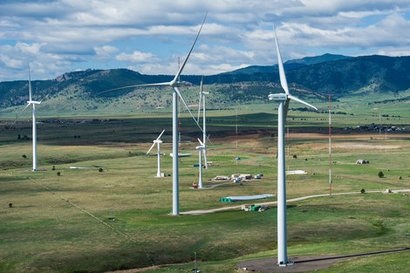
Negative pricing in the Balancing Mechanism (BM) is not a new phenomenon, but the latest forecasts from Cornwall Insight predicts a rising number of negative wholesale price occurrences in the future as intermittent renewables capacity rises. By 2034 14 percent of half-hourly settlement periods could outturn at negative prices.
“In terms of negative imbalance prices, this is not a new trend, but it is on an increasing trajectory as more intermittent renewables are added to the system, and changes to the imbalance price calculation have made it more likely for the Single Imbalance Price (SIP) to outturn below zero” said Tim Dixon, Wholesale Team Lead at Cornwall Insight. “However, as yet these occurrences have not made a real impact on the wholesale power market. While there have been some occurrences on the within-day wholesale market, day-ahead auction prices have never fallen below zero, with the lowest being £1.57/MWh for a single one-hour block, which occurred in 2017. Sunday’s events highlight the increasing impact of price cannibalisation – the depressive effect that high levels of intermittent renewables output have on the wholesale power price – which can significantly reduce revenues for renewable generators”.
Mr Dixon added that the cannibalisation effect will have a significant impact on the business case for new build renewables, as predictions that this phenomenon is set to increase have lowered projected revenues for merchant plant and hindered the ability for offtakers to offer investible floor prices in long-term Power Purchase Agreements.
The impacts are not limited to subsidy-free renewables reliant on the wholesale price, but also to Renewable Obligation (RO) stations that are also exposed to wholesale prices. Also, while Contracts for Difference (CfD) generators are largely protected against price cannibalisation, any generators from Allocation Round 2 and onwards will not receive their subsidy payments if day-ahead auction prices turn negative for six consecutive hours or more. Furthermore, the lack of output response from CfD projects to wholesale prices as they fall may well intensify the impact of cannibalisation and negative pricing for everyone else.
Negative pricing, both in the BM and on the wholesale market, is a trend that seems set to grow and is one to watch out for as more intermittent renewables capacity comes online, a lot of it under a CfD. Given other changes likely to impact the sector in the next ten years – from vehicle to grid to peer-to-peer trading – the wholesale market as we know it already looks set to dramatically change.
For additional information:

